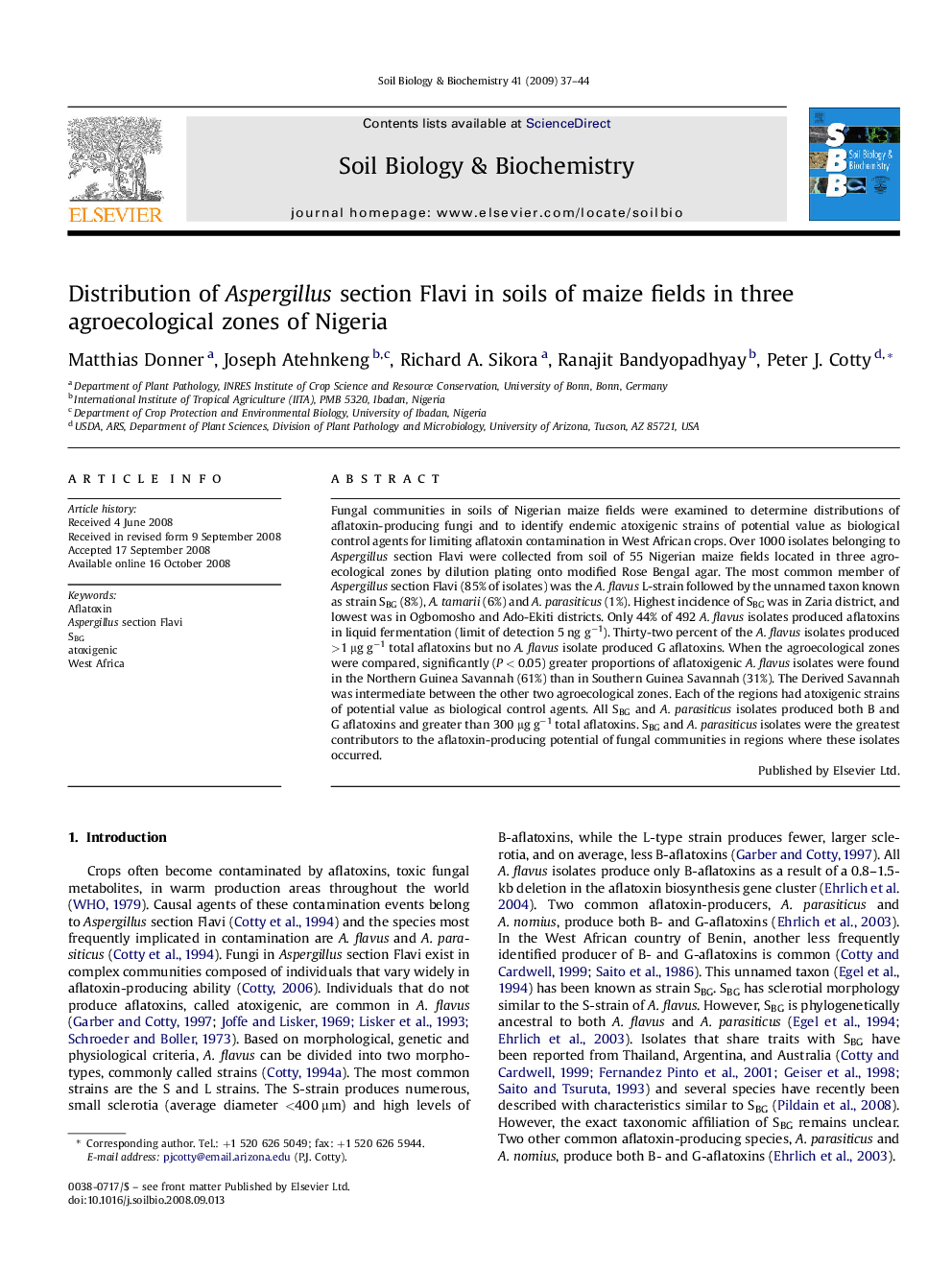| Article ID | Journal | Published Year | Pages | File Type |
|---|---|---|---|---|
| 2026806 | Soil Biology and Biochemistry | 2009 | 8 Pages |
Fungal communities in soils of Nigerian maize fields were examined to determine distributions of aflatoxin-producing fungi and to identify endemic atoxigenic strains of potential value as biological control agents for limiting aflatoxin contamination in West African crops. Over 1000 isolates belonging to Aspergillus section Flavi were collected from soil of 55 Nigerian maize fields located in three agroecological zones by dilution plating onto modified Rose Bengal agar. The most common member of Aspergillus section Flavi (85% of isolates) was the A. flavus L-strain followed by the unnamed taxon known as strain SBG (8%), A. tamarii (6%) and A. parasiticus (1%). Highest incidence of SBG was in Zaria district, and lowest was in Ogbomosho and Ado-Ekiti districts. Only 44% of 492 A. flavus isolates produced aflatoxins in liquid fermentation (limit of detection 5 ng g−1). Thirty-two percent of the A. flavus isolates produced >1 μg g−1 total aflatoxins but no A. flavus isolate produced G aflatoxins. When the agroecological zones were compared, significantly (P < 0.05) greater proportions of aflatoxigenic A. flavus isolates were found in the Northern Guinea Savannah (61%) than in Southern Guinea Savannah (31%). The Derived Savannah was intermediate between the other two agroecological zones. Each of the regions had atoxigenic strains of potential value as biological control agents. All SBG and A. parasiticus isolates produced both B and G aflatoxins and greater than 300 μg g−1 total aflatoxins. SBG and A. parasiticus isolates were the greatest contributors to the aflatoxin-producing potential of fungal communities in regions where these isolates occurred.
